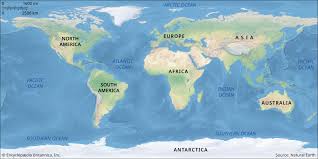Here’s a curated list of ancient cities and their capitals from around the world that were established as political or cultural centers before 1000 CE, organized by region:
1. Mesopotamia & Near East
- Babylon (modern Iraq)
- Capital of: Babylonian Empire (18th–6th century BCE).
- Significance: Home to the Code of Hammurabi and the Hanging Gardens (one of the Seven Wonders).
- Nineveh (modern Iraq)
- Capital of: Neo-Assyrian Empire (705–612 BCE).
- Significance: One of the largest cities of its time, mentioned in the Bible.
- Susa (modern Iran)
- Capital of: Elamite and Achaemenid Persian Empires (c. 2700–330 BCE).
- Significance: Administrative hub under Darius the Great.
- Ctesiphon (modern Iraq)
- Capital of: Parthian and Sassanian Empires (2nd century BCE–7th century CE).
- Significance: Iconic Taq Kasra arch remains a symbol of Persian architecture.
2. Ancient Egypt
- Memphis (near Cairo, Egypt)
- Capital of: Old Kingdom (2686–2181 BCE).
- Significance: Center of Ptah worship and a major trade hub.
- Thebes (modern Luxor, Egypt)
- Capital of: Middle and New Kingdoms (2134–1279 BCE).
- Significance: Home to Karnak Temple and the Valley of the Kings.
- Alexandria (Egypt)
- Capital of: Ptolemaic Kingdom (305–30 BCE).
- Significance: Founded by Alexander the Great; home to the Great Library.
3. Persian Empire
- Persepolis (modern Iran)
- Capital of: Achaemenid Empire (550–330 BCE).
- Significance: Ceremonial capital with grand palaces and reliefs.
- Ecbatana (modern Iran)
- Capital of: Median Empire (7th century BCE).
- Significance: Summer capital of Persian kings.
4. Indian Subcontinent
- Pataliputra (modern Patna, India)
- Capital of: Maurya Empire (322–185 BCE).
- Significance: Described by Greek ambassador Megasthenes as a thriving metropolis.
- Taxila (modern Pakistan)
- Capital of: Gandhara Kingdom (c. 600 BCE–5th century CE).
- Significance: Center of Buddhist learning and trade on the Silk Road.
- Anuradhapura (Sri Lanka)
- Capital of: Anuradhapura Kingdom (4th century BCE–11th century CE).
- Significance: Sacred Buddhist city with massive stupas like Ruwanwelisaya.
5. East Asia
- Chang’an (modern Xi’an, China)
- Capital of: Han, Sui, and Tang Dynasties (1046 BCE–904 CE).
- Significance: Eastern terminus of the Silk Road.
- Luoyang (China)
- Capital of: Eastern Zhou, Han, and Northern Wei Dynasties (770 BCE–534 CE).
- Significance: Birthplace of Chinese Buddhism.
- Pyongyang (North Korea)
- Capital of: Goguryeo Kingdom (427–668 CE).
- Significance: Strategic fortress city of ancient Korea.
6. Mediterranean & Europe
- Rome (Italy)
- Capital of: Roman Republic/Empire (753 BCE–476 CE).
- Significance: Center of the ancient world’s largest empire.
- Athens (Greece)
- Capital of: Athenian city-state (5th–4th century BCE).
- Significance: Birthplace of democracy and philosophy.
- Constantinople (modern Istanbul, Turkey)
- Capital of: Byzantine Empire (330–1453 CE).
- Significance: Founded by Constantine the Great; bridge between Europe and Asia.
- Carthage (modern Tunisia)
- Capital of: Carthaginian Empire (814–146 BCE).
- Significance: Rival of Rome; led by Hannibal during the Punic Wars.
7. Africa
- Axum (Ethiopia)
- Capital of: Axumite Kingdom (c. 100–940 CE).
- Significance: Traded with Rome and India; home to ancient obelisks.
- Meroë (Sudan)
- Capital of: Kingdom of Kush (c. 590 BCE–4th century CE).
- Significance: Known for iron production and pyramids.
8. Americas
- Teotihuacan (Mexico)
- Capital of: Teotihuacan Empire (c. 100 BCE–7th century CE).
- Significance: Site of the Pyramid of the Sun and Moon.
- Tikal (Guatemala)
- Capital of: Maya city-state (c. 200–900 CE).
- Significance: Dominant political and cultural center of the Maya.
9. Central Asia
- Samarkand (Uzbekistan)
- Capital of: Sogdian Empire (4th century BCE–6th century CE).
- Significance: Key Silk Road city under Persian and Turkic rule.
10. Middle East
- Damascus (Syria)
- Capital of: Umayyad Caliphate (661–750 CE).
- Significance: One of the oldest continuously inhabited cities.
- Jerusalem (Israel/Palestine)
- Capital of: Kingdom of Judah (c. 1000–586 BCE).
- Significance: Sacred city for Judaism, Christianity, and Islam.
Key Observations
- Many of these cities were hubs of trade, religion, and governance in their eras.
- Some, like Rome, Damascus, and Xi’an, remain major cities today.
- Others, like Babylon and Teotihuacan, are archaeological sites but retain immense historical significance.
